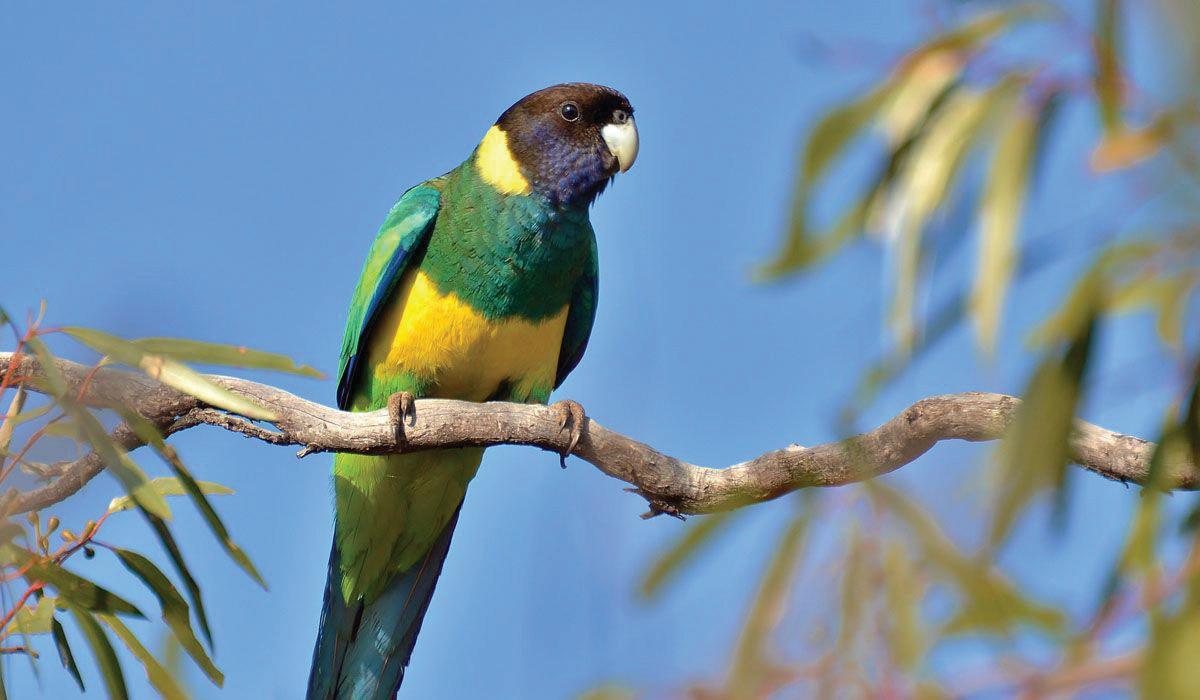
3 minute read
Birds of Bentley Park Part 2. by Bruce May
by SwanCare
Continued from February-March 2020 edition of Tidings. In this issue we’re looking at cockatoos and parrots.
Red-tailed Black Cockatoo
Advertisement

Red-tailed Black Cockatoo
The Red-tailed Black Cockatoo, or Banks’ Cockatoo (Calyptorhynchus banksii), is an occasional visitor to our village, particularly after the flowering gums have started developing their seed pods or gumnuts. While these are still tender, the cockatoos tear them apart to get the goodness from inside, and litter the ground below. For this reason and their loud, screechy calls, they are not very popular with some people.
The male birds have bright red/orange panels under their tails, which gives them their name. The females have speckled chest feathers. These cockatoos live in hollows in trees, and as it can take up to 70 years for such hollows to develop, we need to ensure that many large, old trees are preserved. Because they are losing so many home trees, these cockatoos are officially under threat; and any injured ones are now taken to the Perth Zoo to try to ensure their survival.
The Red Tails are not native to other parts of Australia, so they are endemic to our region.
The call of the red-tailed cockatoos is very similar to other black cockatoo species.
While on the cockatoo species, it is interesting to look at two of the species of Corella which also visit us.
Long-billed Corella

Long-billed Corella
The Long-billed Corella (Cacatua tenuirostris) is the one receiving bad press at the moment, and some people are even declaring them a pest. Their long bills are used for digging bulblets and corms out of the ground, as their major food. In recent years, claims have been made that they have destroyed municipal ovals when hundreds, even thousands, of them descend at once.
However, their efforts may also lead to oxygenation of the grass, and may be beneficial, especially as they are manuring the grass at the same time.
Muir’s Corella

Muir's Corella
Muir’s Corella (Cacatua pastinator pastinator) is the other species we are likely to see here at Bentley Park. Last year, one of the Moreton Bay fig trees on Jarrah Road was covered in what appeared to be white balloons, but were corellas feasting on the ripe figs.
Galah

Galah
Another cockatoo species that visits our village is the Galah (Eolophus roseicapilla) which probably needs little introduction. There are times that pink & grey Galahs will flock with Corellas, and sometimes they even interbreed.
Australian Ringneck

Australian Ringneck
The Australian Ringneck (Barnardius zonarius) is commonly known in WA as the Twenty Eight because of its distinctive call, but is officially known as the Port Lincoln Parrot. I would guess that we have Twenty Eights nesting in our village, because they are such common sights. Although the Twenty Eight has to compete with the Rainbow Lorikeet for nest sites and food, the species is under no threat at the moment. They are seed-eaters.
Rainbow Lorikeet

Rainbow Lorikeet
The last bird to deal with in this section is the Rainbow Lorikeet (Trichoglossus moluccanus) which is not a native of WA. They were introduced from eastern parts of Australia as pets, some escaped, and they found the conditions ideal to breed, and breed, and breed. They are now regarded as a pest, because they threaten the habitats and food sources of other endemic species. People are not permitted to keep them as pets. These lorikeets feed on nectar alone.
As with the birds in the last edition, we should not attempt to feed any of these birds, because they will become reliant on what we give them, and they will miss out on many nutrients they obtain from their native food. There is no harm in offering water in a birdbath, and Twenty Eights in particular adore a good bath and will thank you for it on a hot day.

